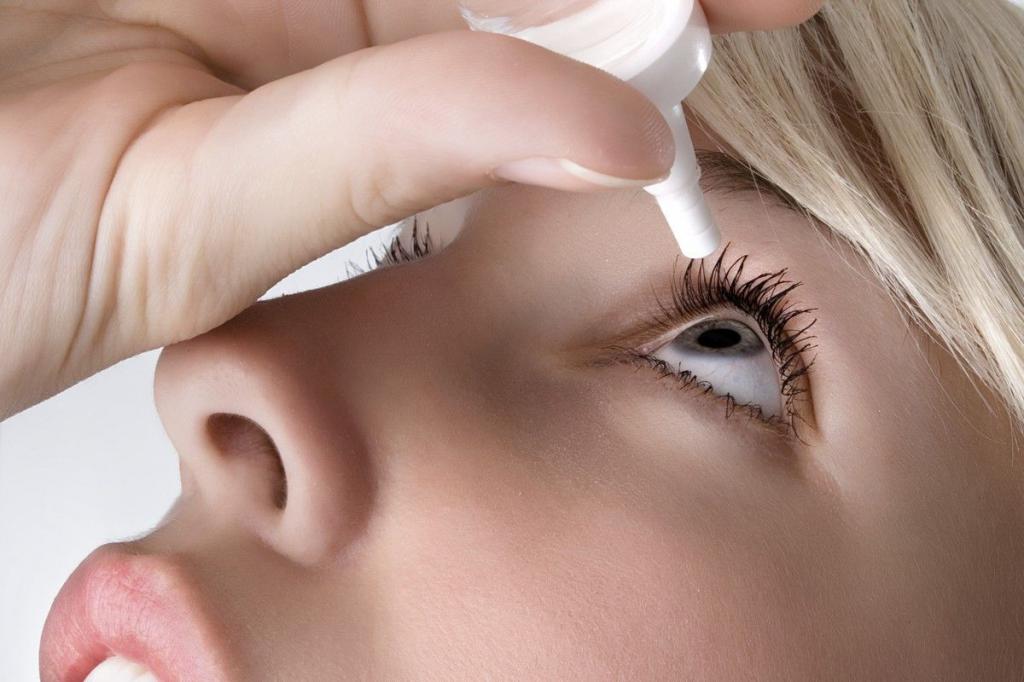Ophthalmoferon is one of the latest ophthalmological products, patented in 1999 and launched into mass production in 2004. This recombinant drug is widely used for the treatment of viral eye diseases. The instruction for Ophthalmoferon is considered in this article.
Composition and form of release
The drug includes diphenhydramine, recombinant human interferon (basic substances), sodium acetate, boric acid, macrogol, hypromellose, sodium chloride, povidone, purified water, disodium edetate (excipients).
I must say that in pharmacies you can buy ten- and five-millimeter plastic bottles that are equipped with a dropper (tip). Directly, the solution looks like a yellowish liquid.
General information
According to the instructions, Ophthalmoferon drops have immunomodulating, antiviral and anti-inflammatory effects. The effectiveness of treatment with this agent is explained by the presence of recombinant human interferon in its composition. The drops, due to this, have enhanced antiviral activity, however, they are safe for a larger number of patients, regardless of whether there is a predisposition to side effects. In addition, they are completely safe for the treatment of eye diseases in children. This is confirmed by the instructions for use of Ophthalmoferon.
Pharmacological Impact
The drug is one of the combined preparations containing recombinant immunomodulating interferon, the effect of which in this medicine is increased due to diphenhydramine (refers to antihistamines). When these substances act, allergic reactions in the form of edema and redness of the conjunctival membrane are reduced.
Such drops are used topically, their absorption into the blood occurs in such small quantities that their presence is not even diagnosed. Accordingly, the active components are not able to cause significant clinical reactions. When Ophthalmoferon enters the eye tissue, it stimulates the reparative processes occurring in the cornea, if such pathologies are caused by viruses and bacteria.
Indications for use
As the instruction indicates, “Ophthalmoferon” is prescribed when diagnosing the following pathologies in a patient:
- keratitis of different origin;
- conjunctivitis of various forms and types;
- keratouveitis (ulceration is possible);
- dry, adenoviral, herpetic keratoconjunctivitis;
- herpetic uveitis;
- herpetic keratitis , which can appear after keratoplasty;
- infections brought into the eyes by injuries or surgery.
In addition, Ophthalmoferon is an effective prophylactic drug for transplant pathologies and allows you to deal with complications that arise against the background of refractive excimer laser surgery and affect the cornea. What else does Oftalmoferon Drops tell us about the instructions for use?
Application features
It is very important to know that, depending on the purpose of use, the dosage of the drug and the time of instillation, as well as the duration of the therapeutic course, vary. If the inflammatory processes are acute and appear at the peak of the formation of the disease, instillations are done up to eight times a day in two drops, until the pathological symptoms completely disappear. As a prophylaxis after surgery, instillations are carried out exclusively in the inflamed organs of vision, but the dosage is two drops. The procedure must be performed from ten to fourteen days 2-4 times a day. So it is written in the instructions to the "Ophthalmoferon."
Therapy of dry eye syndrome is carried out by instillation of the drug two drops twice a day for a month. When using the medicine in a complex with other means of instillation, they are done for thirty days before bedtime and after waking up, two drops each. The drug is not canceled in some cases until the full recovery.

What else does the ophthalmoferon ophthalmic drop say about the application instructions? For preventive purposes, in order to avoid relapse of herpetic keratitis, which may appear during the rehabilitation postoperative period, 1-2 drops of the drug are dripped into the organs of vision over ten days twice a day. In accordance with the instructions, contact lenses must be removed before instillations, since they can deteriorate due to the constant influence of the active components of the product on them. Again, wearing optics is allowed only twenty minutes after the procedure, when the active substances are completely absorbed into the conjunctiva. The instruction for ophthalmoferon eye drops confirms this.
Possible side effects and contraindications
These eye drops do not have any contraindications. Side effects of the drug include only allergic reactions and irritation, manifested due to intolerance to certain components in the composition of the drug. If during the use of the drug there are unpleasant sensations in the organs of vision, it is necessary to consult a specialist to find out the causes of this phenomenon and to use another medicine if necessary.
Use by pregnant women and children
According to the instructions to Ophthalmoferon, it is permissible to use drops during pregnancy, but only after doctors analyze the reactions of the mother and the fetus to the effect of the active substances contained in the drug. In most cases, the use of the drug during pregnancy and breastfeeding is allowed. Does the ophthalmoferon instruction prohibit children?
The use of the drug for the treatment of viral pathologies in children also does not threaten any adverse reactions or complications. Moreover, such drops cope well with diseases even in newborns, without being absorbed into the bloodstream. There is only one caveat: you need to remember that the dosage for infants is most often halved.
So, we have reviewed the instructions for the use of ophthalmoferon eye drops. Let's find out whether it is possible to replace this medication with another.
Analogs
The tool has several similar drugs, which, having a similar effect, differ in their composition and are able to have different performance indicators:
- Alpharon. This is an antiviral immunomodulating agent, which is among interferons. Most often, pathological pathogens develop immunity to drugs of this class, and therefore long-term therapy with the use of such drops will not be useful.
- "Albucid." The drug works best in the treatment of bacterial conjunctivitis, getting into the deep layers of the eyeball and preventing the multiplication of pathogenic microflora due to the destruction of the cells that make it up.
- Aktipol. This is an antiviral immunomodulating drug that has antioxidant properties and is active in restoring the cornea. In addition, drops help eliminate puffiness, and also heal wounds and ulcerations that appear due to the negative influence of pathogenic microflora. It is acceptable to use them as a healing agent after various eye injuries.

- Reaferon-EU. Drops are prescribed to treat viral lesions of the outside of the eyes.
- "Midday". This drug can be compared with Ophthalmoferon in terms of the rate of penetration into tissues and the shell of the organs of vision, but polyriboadenylic acid acts as the basis for it.
- "Altevir." These are antiviral drops that stimulate the immune system of the human body, due to which resources are mobilized and directed to fight the pathogens of various ophthalmic diseases.
Reviews
The drug "Ophthalmoferon" has a large number of good reviews from patients who note its high effectiveness in the treatment of various conjunctivitis and the almost complete absence of negative effects. Patients claim that these drops for the eyes contribute to the rapid removal of inflammation and eye swelling, as well as treat barley.
Ophthalmoferon has only one drawback - a burning sensation during penetration into the eyes, however, patients claim that a few days after its use, it itself disappears. It is recommended that after the introduction of drops lie for several minutes with eyes closed. Patients claim that this helps reduce negative feelings.
“Ophthalmoferon” has a fairly significant price (from 250 rubles), but patients say that the drug is worth the money spent on it. It has been successfully used to treat children.